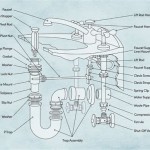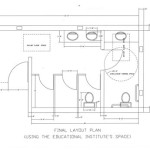The Mystery of the Smelly Bathroom Sink: Causes and Solutions
A bathroom sink that emits an unpleasant odor can be a source of frustration and embarrassment. The source of the stench can range from simple, easily fixable issues to more complex plumbing problems. Understanding the common culprits behind a smelly sink is the first step towards eliminating the odor and restoring a fresh, clean atmosphere in your bathroom.
1. Drain Trap Issues
The drain trap, the curved pipe beneath the sink, is designed to hold a small amount of water, creating a seal that prevents sewer gases from entering your home. This seal can be compromised due to several reasons:
- Evaporation: If the water in the trap evaporates, the seal is broken, allowing sewer gases to escape. This is more likely to occur in sinks that are infrequently used.
- Blockage: A clog in the drain trap can prevent water from filling the trap, leading to the same problem as evaporation.
- Broken or Cracked Trap: A damaged trap can allow sewer gases to seep directly into the sink. This can be caused by age, corrosion, or accidental damage.
To address drain trap issues:
- Pour water down the drain: If you suspect evaporation, simply pouring a cup of water down the drain should reestablish the seal.
- Remove and clean the trap: If you suspect a clog, detach the trap, clean it with a brush, and reassemble it. You may need to use a drain cleaner if there is severe buildup.
- Replace the trap: If the trap is broken or cracked, it needs to be replaced. You can usually find replacement traps at hardware stores.
2. Drain Clogs and Buildup
When hair, soap scum, toothpaste, and other debris accumulate in the drain, they can create a breeding ground for bacteria. This bacterial growth can release foul odors that travel up the drain and into the sink.
To address this issue:
- Regular cleaning: Use a drain cleaner designed for hair and soap scum to prevent buildup. You can also use baking soda and vinegar to naturally clean and deodorize the drain.
- Use a drain strainer: A drain strainer can capture hair and debris before they reach the drain, reducing the risk of clogs and odors.
- Professional drain cleaning: In cases of severe clogging or persistent odor, a professional plumber can use specialized equipment to clean the drain thoroughly.
3. Plumbing Problems
In some cases, the source of the odor might be located further down the plumbing system, rather than in the sink itself. This could include:
- Sewer line issues: A cracked or broken sewer line can allow sewer gases to escape into your home. This is a serious issue that requires professional repair.
- Vent pipe problems: The vent pipe allows sewer gases to escape into the atmosphere. If the vent pipe is blocked or damaged, it can cause odors to back up into your sink.
- P-trap issues in other fixtures: If the p-trap in a nearby toilet, bathtub, or shower is dry, it can also contribute to odors in the bathroom sink.
If you suspect a plumbing problem, it's crucial to contact a licensed plumber for a proper diagnosis and repair.

How To Clean A Stinky Sink Drain By Home Repair Tutor

What Causes Bathroom Drains To Smell

How Can I Help A Stinky Bathroom Sink Drain Cleaning More

What To Do When The Bathroom Sink Smells Like Mildew Mold Smell

Why Your Bathroom Sink Drain Smells

How To Get Rid Of The Sewer Smell From A Bathroom Terry S Plumbing

Why Is There A Bad Smell Coming From My Bathroom Sink

Pin On Clean Organize

Unused Bathroom Smells Like A Sewer Causes And Solutions

Sewer Smell In Bathroom Solved Bob Vila
Related Posts







